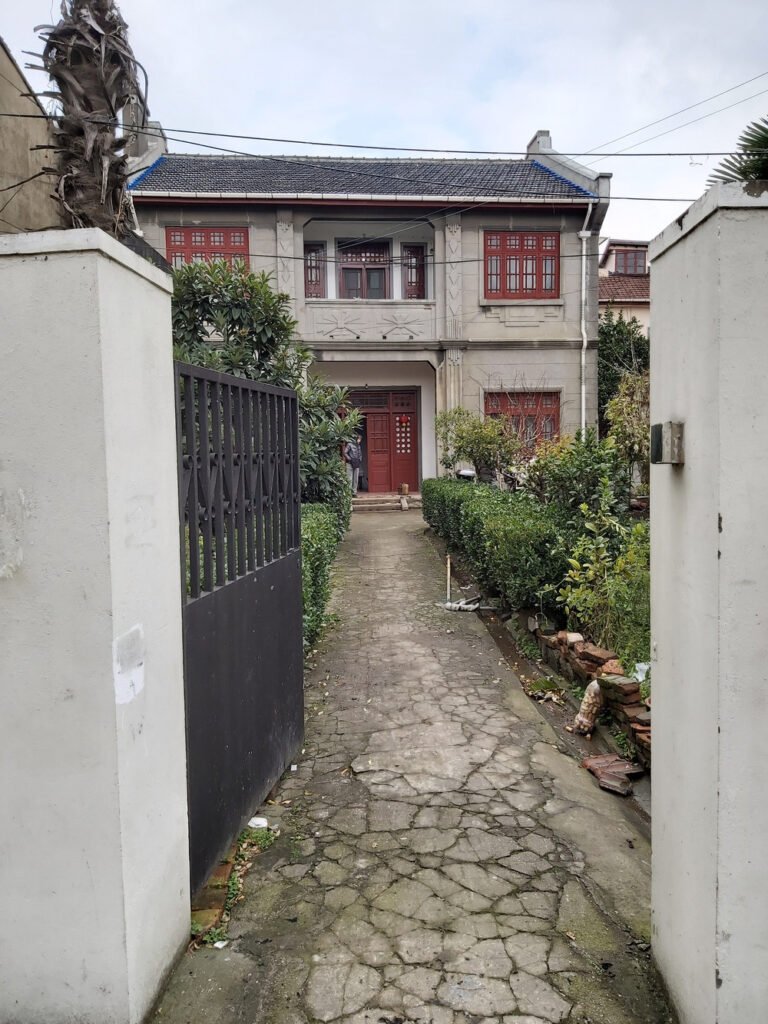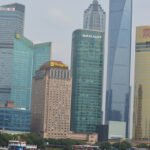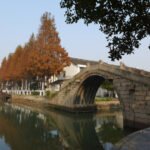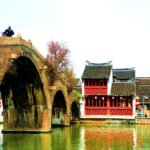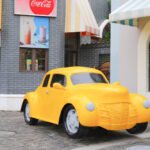Duration: 1 day. Time: January. Per capita cost: 1 yuan. With whom: Alone. Way of playing: Photography, independent travel. The author visited these places: Julu Road, Shanghai. Published on January 19, 2020, 13:01. Another Urban Landscape on the Streets of Magic City That Is Often Overlooked – A Glimpse of the Streetscape of Housing Expropriation and Demolition in Jiangwan Town, Hongkou District, Shanghai. I. Preface. According to the report of Laodong Daily on January 6th, ‘Moving to a new home! Yesterday was the day when more than 800 households in six relocation plots such as 340, 341, 354, and 355 in Jiangwan Town Street, Hongkou District collectively moved. This is also the first collective relocation of relocated residents in this district after the New Year in 2020.’ After learning this news, I went to the relocation plot in Jiangwan Town to see the different scenery of Magic City Shanghai. II. From the city leaders’ inspection to the first batch of residents moving, it was only five months. On August 5, 2019, city leaders came to Jiangwan Town, Hongkou District to investigate old town renovation and required efforts to solve the difficulties of ‘preservation, renovation, and demolition’. On September 10, 2019, announcements were posted, and the residents in six relocation plots such as 340 and 341 in Hongkou District smoothly passed the signing ratio. On December 2, 2019, the ‘Housing Expropriation Decision of the People’s Government of Hongkou District, Shanghai’ was posted. On January 5, 2020, more than 800 households in the relocation plot had their first collective relocation. III. Notes on inspecting the housing expropriation base for old town renovation in Jiangwan Town. 1. Office of the housing expropriation base. 2. All kinds of information such as announcements and public notices. 3. Information on property rights exchange housing. South Station in Songjiang District (four households chose this real estate project). Huinan Town in Pudong District (sixteen households chose this real estate project). Caolu in Pudong District (only six households chose this real estate project). Lianqi Jiacheng in Jiading District (only four households chose this real estate project). Nanqiao in Fengxian District (it seems that no household chose this real estate project). The real estate project closest to the relocation base – Mocuili in Caihongwan, Hongkou District. There are a total of 316 available housing sources, and 109 sets have been sold. 4. The current status of the expropriated houses. 5. A luxurious house under expropriation. Judging from the single-certificate area of this expropriated house, the Cao family can only rank 11th, indicating that there are still ten families with larger areas than his. The largest is more than 400 square meters. This is a building with history and stories. If the owner of the house is willing to tell you its story, you can write a book. Shortly after it was built in the 1930s, the War of Resistance against Japanese Aggression broke out and the house was occupied by the Japanese. After the victory of the War of Resistance against Japanese Aggression, the house was occupied by the Kuomintang army. During the war years, in order to avoid the war, the owner of the house fled from this house to the city for refuge. After liberation and during the Cultural Revolution, the house almost changed owners… This house is 88 years old and there are gardens in front and behind the house.
The original owner of the house was only 35 years old when it was built. The most distinctive feature of the house is that each floor has a ceiling height of 3.7 meters. To this day, the building has not experienced any ‘settlement’ deformation. It was just renovated two years ago. The owner is currently involved in the transplantation of trees. Banana trees and orange trees, both of considerable age, are present. The entire garden area spans approximately 0.68 acres, complete with a small well. After 88 years, the floor tiles remain intact and beautiful. From the second floor, one can enjoy a panoramic view of the garden. The Cao family also has a backyard garden, where a bathroom has been constructed. This luxury residence, due to the lack of pipeline gas and other reasons, can only be valued according to the ‘old lane’ coefficient, and it cannot be considered a garden villa, because to qualify as a garden villa, it would also need to have ‘hardware’ facilities such as a garage and a nanny room. There is a storage room built in the backyard garden. 6. The street scene of the demolition area is quite distinctive, particularly with this historical sign—Jiangwan Grain Purchase and Sale Station. It is a pity that the word ‘Jiangwan’ is obscured and cannot be displayed. Local residents told me that they refer to this as the Jiangwan Town grain management office, which has been in existence for at least sixty years. 7. The closure of Jiangwan Town’s Triangular Plot Market On January 20, 2020, at 4 PM, I went there to witness the closure of the Jiangwan Town Triangular Plot Market, which had been in operation for about sixty years. The market, located at No. 26 Public Security Street in Jiangwan Town, is commonly referred to as the ‘Triangular Plot’ Market. In fact, it is not the triangular plot market at the intersection of the three roads—Changtan Road, Hanyang Road, and Emei Road—as originally conceived by the people of Shanghai. It is managed by Shanghai Triangular Plot Market Management Co., Ltd. and should be called ‘Jiangwan Market.’ Local residents told me not to underestimate this market, as it has a history of at least sixty years and is very popular because the prices are cheap, so cheap that some residents from nearby areas such as Liangcheng New Village, Sanmen Road, and Quyang New Village would come to buy vegetables. By the way, don’t underestimate the ‘authentic’ Triangular Plot Market in Hongkou; it is one of Shanghai’s 180 China Time-honored Brands: named as ‘China Time-honored Brand’ by the Ministry of Domestic Trade of the People’s Republic of China in October 1993; named as ‘China Time-honored Brand’ by the Ministry of Commerce of the People’s Republic of China in May 2010; approved as a member unit by the China General Chamber of Commerce China Time-honored Brand Working Committee in June 2005; and recognized and registered as a trademark ‘Triangular Plot’ by the Ministry of Commerce of the People’s Republic of China in March 2011. The Hongkou Triangular Plot Market, with a history of about 130 years, remains the largest indoor market in Shanghai after liberation, ranking first among the four major markets in Shanghai (followed by Changshou Branch Road Market, Julu Road Market, and Shaanxi North Road Market).

Some stall renters are in the process of moving their household items. On January 23, 2020, at noon, I visited Jiangwan Market again and saw the following scene. By the way, the Shanghai-style writer Lin Weiyin once wrote an article titled ‘Hongkou Vegetable Market’, which included the Sanjiao Market as one of Shanghai’s ‘Hundred Scenes’. She described the bustling and prosperous atmosphere of the market back then, stating: “…The market offered a variety of goods, selling Chinese and Russian bread, as well as groceries and flowers… The majority of the market’s patrons were Chinese, but there were also ‘Western housewives and Japanese cooks’; the main customers were individuals, of course, there were also large group buyers like the International Settlement…” Those interested can look up this book to understand the former glory of the Sanjiao Market in Hongkou. The demolition of the Sanjiao Market in Jiangwan Town will undoubtedly bring inconvenience to the nearby residents and may signify a change in lifestyle for the operators of the rented stalls. 8. The new homes that the relocated residents are about to move into: This acquisition provides six areas of housing for the subjects of the acquisition to choose from, one of which is within Hongkou District, in the Rainbow Bay area along the extension of Liangcheng Road, only about 1 kilometer away from the original homes of the relocated residents. Out of the six housing options, no one chose Fengxian District, and 109 households chose Mo Cui Li. Due to the property’s location in the urban area, with schools, hospitals, and elderly care institutions nearby, the supporting facilities are complete. Although the price is nearly 50,000 yuan, the majority of the acquired households still chose to purchase there. A total of 316 housing units have been sold out of 109. Four, Observations 1. The speed of the relocation of six neighborhoods such as Jiangwan Town Hongkou District 340 and 341 is impressive. Of course, the talk of relocation for this plot has been going on for many years, with several freezes on household registration. 2. The residents’ quick response and rapid relocation demonstrate the appeal of the policy. 3. The policy on relocation and demolition is quite transparent and open, so much so that even an ‘outsider’ like me can easily enter and see all the information inside, because the wall of the housing acquisition base office hangs all the policies you want to understand, as well as the area information and property owner information for each household. 4. It is often said that residents of the Magic Capital have turned over a new leaf and become rich due to relocation, but today it seems somewhat one-sided. However, it is certain that relocation has improved living conditions; those who were used to living in large houses said they would start feeling uncomfortable. 5. Through the relocation of housing in this plot, no one became rich, nor did anyone discuss who became rich. The only thing mentioned was the discomfort and reluctance to leave a place that had been lived in for so many years and was so convenient.
On January 19, 2020, Old FU first drafted a description of the urban landscape in Jiangwan Town, Hongkou District, Shanghai, a place often overlooked by passersby. The draft was supplemented on January 20th and further supplemented on January 23rd, detailing the closure of the Jiangwan Triangle Market.
